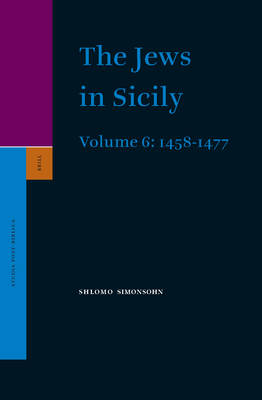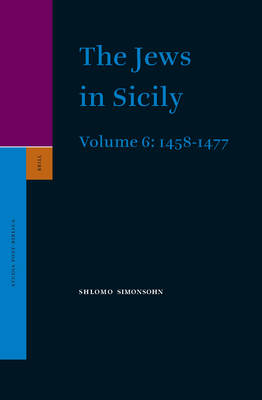
Je cadeautjes zeker op tijd in huis hebben voor de feestdagen? Kom langs in onze winkels en vind het perfecte geschenk!
- Afhalen na 1 uur in een winkel met voorraad
- Gratis thuislevering in België vanaf € 30
- Ruim aanbod met 7 miljoen producten
Je cadeautjes zeker op tijd in huis hebben voor de feestdagen? Kom langs in onze winkels en vind het perfecte geschenk!
- Afhalen na 1 uur in een winkel met voorraad
- Gratis thuislevering in België vanaf € 30
- Ruim aanbod met 7 miljoen producten
Zoeken
Omschrijving
This volume in the series Documentary History of the Jews in Italy illustrates the history of the Jews in Sicily from 1458 to 1477. It is the sequel to the first five volumes and covers the events during the rule of King John. Although John continued the policies of his father Alphonso towards the Jews of the island, there is a distinct deterioration in their position during his times. After years of incitement by the members of the Mendicant Orders, anti-Jewish riots broke out in various parts of the Sicily. The worst of them was the massacre in Modica in 1474. During that period the Jewish minority of Sicily continued to flourish economically and socially. Nearly a thousand documents, many of them published here for the first time, record the fortunes of the Jews and their relationships with the authorities and their Christian neighbours. Much new information has come to light, and many facets of Jewish life in Sicily have been uncovered.
The abundance of historical records in the archives of the Crown and of local authorities compares favourably with the relative scarcity of surviving documentation in earlier centuries. Therefore, again, many documents had to be reported in summary form. The volume is provided with additional bibliography and indexes, while the introduction has been relegated to the end of the series on the Jews of the island.
The abundance of historical records in the archives of the Crown and of local authorities compares favourably with the relative scarcity of surviving documentation in earlier centuries. Therefore, again, many documents had to be reported in summary form. The volume is provided with additional bibliography and indexes, while the introduction has been relegated to the end of the series on the Jews of the island.
Specificaties
Betrokkenen
- Auteur(s):
- Uitgeverij:
Inhoud
- Aantal bladzijden:
- 724
- Taal:
- Engels
- Reeks:
- Reeksnummer:
- nr. 6
Eigenschappen
- Productcode (EAN):
- 9789004140769
- Verschijningsdatum:
- 16/09/2004
- Uitvoering:
- Hardcover
- Formaat:
- Genaaid
- Gewicht:
- 1443 g

Alleen bij Standaard Boekhandel
+ 1227 punten op je klantenkaart van Standaard Boekhandel
Beoordelingen
We publiceren alleen reviews die voldoen aan de voorwaarden voor reviews. Bekijk onze voorwaarden voor reviews.









